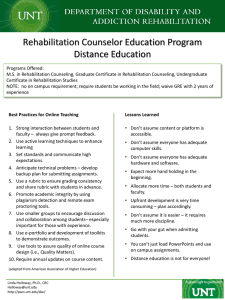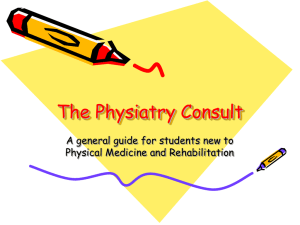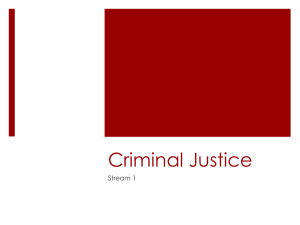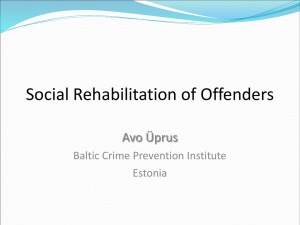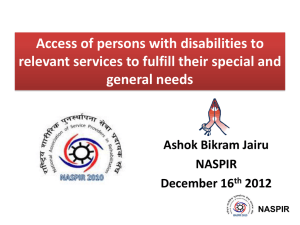Sustainability_Presentation_Nepal_UK
advertisement
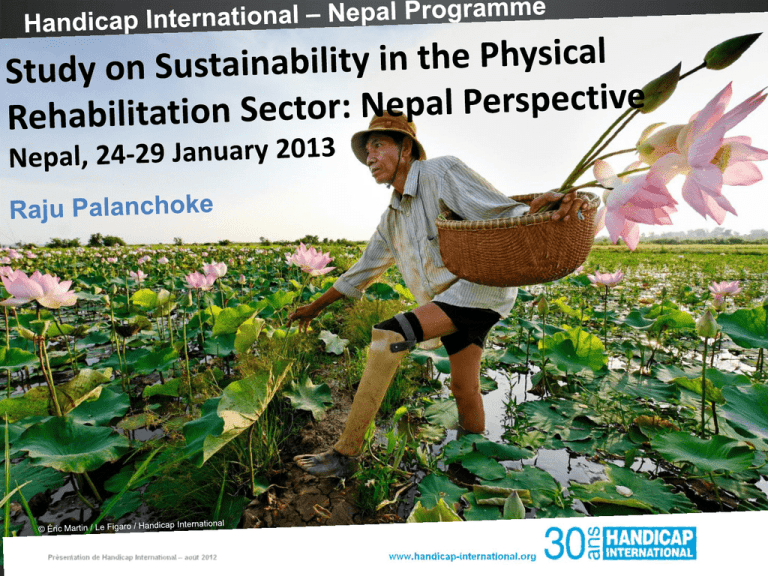
Outline of the presentation • Context • Nepal’s participation in the research • How the research helped/contributed in strengthening the physical rehabilitation services in Nepal • What was learned • Constraining factors • Enabling factors • Conclusion Key Stakeholders of the PR Sector in Nepal • Government of Nepal : – 5 Ministries involved • 13+ Service Providers : – – – – 3 centres are managed by Government 4 centres managed by local NGOs 2 centres by private organizations 4 centres by hospitals • Professional Associations • Disabled People Organizations : – National Federation of Disabled Nepal – NFDN – Nepal Association of Physical Disabled -NAPD • International stakeholders • Funding agencies Nepal’s participation in the research Initial field trip by a Searcher from LSHTM workshop was organised by LSHTM and HI Assessment of physical rehabilitation sector organised by 2nd workshop was consultants jointly organised by LSHTM and HI to follow-up progress How the research helped/contributed • An increased the understanding of rehabilitation among actors • Underliend the requirement of common vision for sustainability of rehabilitation services. • The sectorial concept for physical rehabilitation has been emerging with increasing interactions among service providers, DPOs and government authorities. • Support to NASPIR (National Association of Service Providers in Rehabilitation) for the development of National Strategic Direction on the Physical Rehabilitation Sector. • Opening the avenue with authorities (MOWCSW, MOHP, MOPR and NPC) for financing the rehabilitation services. What was learned • Developing a common vision amongst the actors for the rehabilitation sector is a first step towards the building of sustainability in the sector • Maintaining regular communication and interaction with the Government authorities remains essential to promote decisions on policies and resource allocation for the physical rehabilitation services. • The sustainability indicators that were jointly defined during the sustainability study in 2010 and 2012 can be promoted as a part of the progress monitoring tools of the rehabilitation sector. Constraining factors • Three Government authorities (MWCSW, MOPR, MOHP) have emerged as the key public actors for disability rehabilitation. However, the multiplicity of public actors in the rehabilitation sector appears more as a constraint than as a support due to absence of a coherent vision and leading authority for the sector in Nepal. • Frequent turnover of government officials, resulting in the lack of institutional memory and the need to restart coordination from the beginning, impacts making decisions for rehabilitation policies/programmes. • There is as yet no comprehensive updated data on disability as well as on rehabilitation service provisions in Nepal. Enabling factors • In Nepal, the sectorial concept for physical rehabilitation is new, however, rapidly evolving. • Increasing interest of the national public authorities in the physical rehabilitation services: – MWCSW, the main line-ministry for disability, has committed to earmark funds for 3 rehabilitation centres – The MOPR has funded NDF rehabilitation centre for the rehabilitation of the conflict victims – The MOHP, appearing as a new actor, has recently allocated some funds for the provision of physical rehabilitation services. • Nepal, being a state party of the UN CRPD, is developing endeavors to meet the obligations of CRPD; including provision of rehabilitation services to persons with disabilities. Conclusions Questions • Who is in-charge of the general management and coordination of the rehabilitation sector? • Who will the future rehabilitation service providers be? Local NGOs or private organisations or public services? • How will the rehabilitation services be financed? If service providers are NGOs and private organisations. These questions are key to determine the sustainability of the sector.


